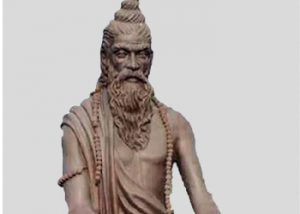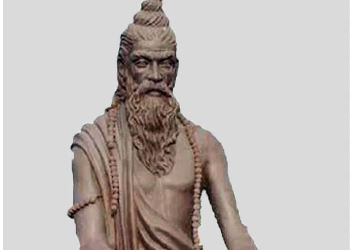Patanjali’s Yoga Sutras is without doubt one of the best programs for psychological exploration, introduced to us centuries in the past. Maharshi Patanjali explains that Yoga is the trail to regulate the uncontrolled actions of the thoughts (Chittavrittis). Thus, probably the most elementary apply, in response to Patanjali, is the psychological self-discipline of Yoga.
Patanjali doesn’t restrict the apply of Yoga to bodily postures alone; he locations higher emphasis on regulating the thoughts and ideas, which are sometimes the foundation reason behind our struggling.
On this article, we’ll discover two key disciplines from Patanjali’s Yoga Sutras: Abhyasa and Vairagya. These two practices are thought-about the foundational steps to mastering the ideas that come up within the thoughts. By mastering our ideas, we achieve management over the thoughts, thereby mastering it.
Sufferings originates from the thoughts
We see most of us bear the Kleshas (causes of struggling) indirectly or one other. If we take a look at the character of our issues, we will observe that almost all of them are originating from the thoughts. All of the Chitta vrittis (pointless chattering of the thoughts) are those truly inflicting troubles, not mundane world issues (that looks like the reason for struggling).
To cease being regulated by the thoughts and to have the ability to regulate the thoughts itself, is without doubt one of the targets of Yoga. Patanjali factors out the 2 most vital disciplines that assist regulate the thoughts and finally lead the individual to freedom from all of the impressions of the thoughts.
These two disciplines are Abhyasa and Vairagya. They’re defined within the first chapter of Yoga Sutra “Samadhi Pada” in verse 1.12. The sutra goes like this;

“Abhyavairagyabhyan Tannirodhaha”
Abhyasa and Vairgya are the 2 methods to calm the restlessness of the thoughts.
— Maharishi Patanjali, Yoga Sutras 1.12
What’s abhyasa?
The literal which means of the phrase Abhyasa is ‘apply’ or ‘constant examine.’ For instance, the examine of Yoga is named Yogabhyasa.
The phrase Abhyasa is rooted within the idea of ‘to sit down.’ Nevertheless, it doesn’t indicate informal sitting; somewhat, it refers to a deeper type of sitting one that’s persistent, undisturbed by trivial distractions, and interesting sufficient to be loved with out experiencing boredom.
Abhyasa is the state the place an individual is totally immersed in severe apply, growing a drive for it. With continued apply, not solely does the individual enhance, however additionally they develop a want for extra apply. Very like a younger youngster studying to stroll, the method is fulfilling regardless of the inevitable falls. The kid persists, getting up time and again to proceed working towards. That is the essence of Abhyasa.
By Abhyasa, one can interact within the severe but fulfilling apply of religious duties, in the end gaining mastery over the uncontrollable thoughts. It’s the constant effort to align our programs and produce them into concord with each other.
Abhyasa in response to the Yogasutras
Within the yoga sutra, Abhyasa is outlined in Sutra 1.13 and 1.14. Patanjali says in verse 1.13;

‘Tatra Sthitau Yatno-bhyasah’.
Abhyasa is the apply or self-discipline employed to attain and stay steady within the state of concord with our personal self.
— Yoga Sutra 1.13
Nevertheless, the steadiness that’s defined right here will not be of a brief kind. It implies that the steadiness by Abhyasa, as soon as achieved, must be current with you most or all the time. Solely then it’s thought-about Abhyasa.
Persistent repetition of the religious apply is vital to discovering the calmer sides of the thoughts and settling there. That’s the reason Patanjali additional elaborates Abhyasa in verse 1.14 because the apply carried out for a very long time, most likely years, with out interruptions. Abhyasa must be carried out with nice honor and respect. It’s then that an individual settles in Abhyasa and learns to negate the modifications of the thoughts.
After explaining Abhyasa, then comes the following self-discipline Vairagya.
What’s vairagya?
Vairagya refers to non-attachment. It’s usually misunderstood as a conduct involving leaving one’s household, mates, and retreating to the Himalayas for religious progress. Nevertheless, you will need to observe that Vairagya will not be restricted to Sannyasis (renunciates); it’s a apply for everybody. It includes detaching oneself from actions and, in the end, from the impressions that accumulate within the thoughts.
The phrase Vairagya is derived from raga, which implies coloring or attachment. Actually, Vairagya means “changing into colorless,” referring to the thought of shedding the “colours” or attachments to folks, objects, concepts, and different materials issues.
Why is working towards non-attachment vital? It’s as a result of the attachments we’ve to folks or issues affect our perceptions and create a false sense of id. These attachments usually result in struggling, as we’re continually on the mercy of exterior situations.
Simply as we naturally want materials possessions, this tendency is step one towards attachment. The apply of refraining the thoughts from pointless possessions is named Aparigraha, the final of the 5 Yamas in yoga. Due to this fact, Aparigraha might be thought-about a preparatory apply for Vairagya.
Vairagya in response to the yogasutras
Verse 1.15 explains Vairagya as ‘Drishta Anushravika Vishaya Vritrishnasya Vashikara Sanjna Vairagyam’. It means ‘when the thoughts loses wishes for the objects which might be seen, described in custom or talked about within the scriptures, it acquires a state of pure desirelessness (vashikara). This state is named Vairagya.
Our psychological energies are at all times caught upon the pleasurable issues that we see or hear. Patanjali asks us to extract these energies from the thing and provides them a path that may lead us to psychological freedom. It’s step one to the trail of Vairagya.
Vairagya is a vital high quality of the yogi to achieve mastery over the seen or invisible attachments. It’s the abandonment of the false impressions of the thoughts which create unreal interpretations of ourselves and the world round us.
Patanjali additional elaborates on this in verse 1.16 ‘Tat Param Purusha Khyateh Guna Vaitrshnyam’. It implies that non-attachment to the subtlest components, constituent rules or the qualities (3 Gunas) themselves, achieved by the data of pure consciousness, is named supreme non-attachment (Param Vairagya).
Patanjali calls Param Vairagya or the very best type of Vairagya to that state wherein the yogi is indifferent from not solely the gross facets of the world but in addition turns into so unattached that he offers up Sattva, Rajas and Tamas themselves.
Patanjali says that when a yogi is ready to distinguish between the true and false impressions of the thoughts, he learns Vairagya. And when he’s settled in his true self, he understands that the true happiness lies inside and never outdoors. Therefore, by renouncing all of the outer attachments, the yogi is blissed in his personal actual self.
How do abhyasa and vairagya work collectively?

The ideas of Abhyasa and Vairagya, although seemingly reverse, work collectively as psychological pillars to control our thoughts. They’re complementary processes that assist self-exploration.
Training these two rules means discovering a stability between effort and ease. For instance, by Abhyasa, you set in vital effort right into a activity (or “apply”), however by Vairagya, you discover ease in that apply by not changing into hooked up to it. On this means, the 2 disciplines complement one another.
Abhyasa gives the trail to self-exploration, whereas Vairagya ensures that you just keep on that path, undistracted by worldly attachments. Merely put, if Abhyasa teaches you to apply psychological disciplines with humility and respect, Vairagya ensures that you’re not distracted by the attachments of the world throughout your apply.
Making use of abhyasa and aairagya in day-to-day Life
As social beings, we’re continually influenced by all the pieces taking place round us—whether or not in society or our speedy environment affecting us bodily, mentally, and emotionally. The growing adjustments within the exterior world are additionally starting to impression our inside world.
To revive stability in our minds, it’s important to apply Abhyasa and Vairagya in our each day lives. Listed here are some methods to combine each Abhyasa and Vairagya into your routine.
1. Mix Effort and Ease
Abhyasa and Vairagya are two important keys to attaining greater psychological functioning. To domesticate these qualities, you possibly can start by combining each effortful and calming practices in your train routine. Begin with vigorous workout routines like jogging, biking, 108 Solar salutations,, or different body-loosening actions. Afterward, stability these with calming practices like yin yoga, deep respiration, and conscious meditation.
The hassle you set into the extra demanding workout routines displays your Abhyasa, as you interact in them with focus and vitality. These practices assist clear your thoughts and alleviate boredom. However, the quieter workout routines foster a way of calm, permitting you to detach the thoughts from exterior distractions -embodying the precept of Vairagya.
2. Mentally Journey from Gross to Delicate
The apply of Abhyasa and Vairagya requires conscious effort. You need to observe what comes and goes in your thoughts. While you sit in your mat for meditation or deep respiration, make sure you stay conscious of the ideas and projections arising in your thoughts.
This consciousness will naturally develop as you study to grasp your psychological workings, from the obvious to the delicate. While you meditate, observe the trivial ideas that your thoughts creates. As you acknowledge and finally dissociate from them, you’ll transfer towards the subtler facets of your thoughts.
This train will reveal how our thoughts performs delicate tips on us, and the way, by devoted yoga apply, we will study to beat them.
3. Hold your self engaged whereas being conscious of your self
Consciousness is the essence of meditation and the easiest way to combine Abhyasa and Vairagya. The explanation we battle to take care of a constant apply (Abhyasa) is as a result of we rapidly lose consciousness after beginning. By changing into really conscious of ourselves, we will stop the thoughts from drifting into constructive or unfavorable patterns throughout apply.
Due to this fact, consciousness is vital to sustaining each Abhyasa and Vairagya. Domesticate consciousness in each side of life: be conscious of what you’re considering, doing, consuming, how you’re respiration, and the way you’re feeling.
4. Hold working towards
The important thing to staying within the rhythm of a yogic life-style is rarely ceasing to apply. Abhyasa could generally really feel like a battle, however it’s the most important factor for attaining constructive psychological well being. By constant, devoted apply, you possibly can study to differentiate your true self from the model created by your thoughts. This, in flip, will assist you to launch the false impressions that cloud your notion.
When working towards asanas, preserve steadiness. It’s by steadiness that calmness arises, permitting you to clear the thoughts of distractions.
Due to this fact, proceed dwelling the yogic life-style each on and off the mat. Don’t let psychological afflictions management you. As a substitute, by Abhyasa and Vairagya, take management of your thoughts.
5. Conserving monitor of your Attachments and Aversions
As talked about earlier, Vairagya is not only the apply of letting go; it’s the apply of not attaching to issues within the first place. To apply Vairagya in each day life, begin by making an inventory of your attachments and aversions issues, folks, habits, or concepts that you’re drawn to, and people that you’ve an aversion to.
This train helps you distinguish between what you really want and what you don’t. When you acknowledge the distinction between what you genuinely want and what your thoughts irrationally craves, you achieve the power to discern the actual from the unreal. As this realization unfolds, you possibly can additional domesticate non-attachment by deeper meditation.
6. Reduce the Coloring of the Thoughts
Our thoughts is an professional at creating a colourful world for us. Usually, these colours symbolize false interpretations of ourselves and the world round us. They’re mirrored in our pleasures, likes, dislikes, wishes, greed, and extra.
By practices like meditation, deep respiration, and focus, you possibly can cut back this “coloring” of the thoughts. While you immerse your self totally within the apply of yoga, you grow to be much less depending on materials issues. Acceptance naturally arises because the fruit of a constant yogic routine.
Conclusion
Abhyasa and Vairagya are the 2 important pillars on the trail of Yoga. If both is uncared for or not practiced, reaching Samadhi, the final word aim of yoga, turns into not possible. The important thing to calming the wandering thoughts lies within the constant apply of Abhyasa and Vairagya.
Maharshi Patanjali emphasised the significance of those two rules as foundational instruments for regulating the thoughts, releasing it from pointless distractions and sources of struggling. By firmly establishing ourselves in these practices, we will achieve management over the thoughts and in the end acknowledge its Swaroopa (true nature or self).

